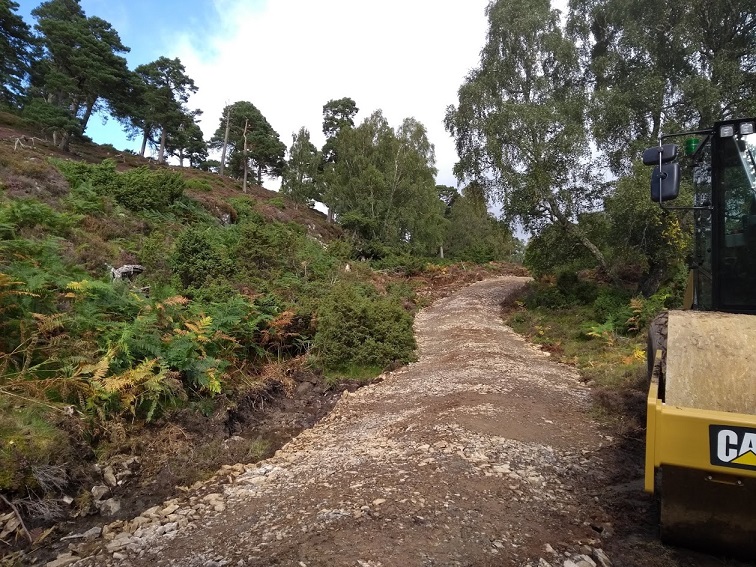
Parkswatch was sent photos a couple of weeks ago of new road construction on the Balavil Estate. Earlier this year Balavil was granted planted permission by the Cairngorms National Park Authority to construct a controversial new road over into the heart of the Monadliath Wild Land Area (see here) and (here). (Work on that road is now well underway and Parkswatch will report on the end result in due course). This new work was reported to the Cairngorms National Park Authority who have confirmed it had been undertaken without any planning consent.
I have been in touch with the estate this week and am pleased to be able to report back that they:
“have ceased all work on the track and have had a site visit with the planners from the CNPA and are working closely with them to resolve the issues.”.
That provides a breathing space – so what are the issues?
New Prior Notification to Highland Council
After ascertaining that the construction of the new road was unlawful, I was notified through the North East Mountain Trust, who monitor all hill track applications in the Cairngorms, that the Balavil Estate had submitted a Prior Notification to Highland Council on Friday 6th September to “upgrade” 7.75 km of track on the estate.
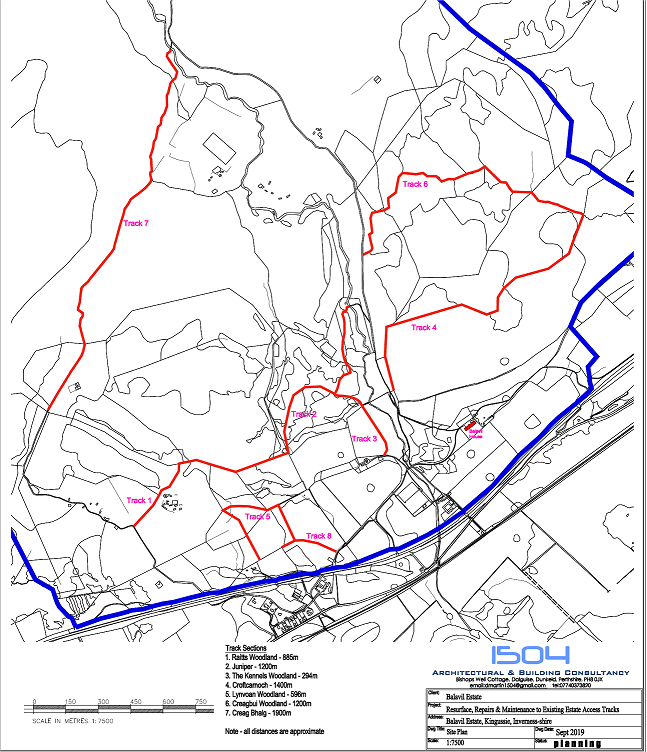 (For some reason the notification, Reference19_04036_PNO, had disappeared from the Highland Planning Portal today so I cannot give links. This post is based on the documents I downloaded).
(For some reason the notification, Reference19_04036_PNO, had disappeared from the Highland Planning Portal today so I cannot give links. This post is based on the documents I downloaded).
It appears therefore that the estate had been fully aware that they needed to notify Highland Council and through them the Cairngorms National Park Authority of the proposed works for comment but had nevertheless decided to start them anyway. This, I am afraid, is another example of a landed estate flouting the law.
The reason this has happened, I suspect, is that planning law on new roads/tracks is so weak as to be effectively useless. Under the Prior Notification system, while there is a legal duty for the landowner or land manager to notify new agricultural or forestry track work to the Planning Authority, the Planning Authority has NO power to refuse them, as they are still classed as a permitted development. All the Planning Authority can do is require the landowner to seek “prior approval” before works commence – in effect the Planning Authority can influence how tracks are designed but not whether new tracks are constructed. This makes it particularly difficult to enforce the law. As long as a landowner says they are prepared to talk about the design of a track, its very hard for the National Park to do anything under the Prior Notification system.
The key question therefore is whether these proposed track “upgrades” by Balavil do fall under the Prior Notification System.
What are the proposed tracks for?
In the supporting statement for the application, there is a brief statement for each track about its use: four are claimed to be for both forestry and agriculture “mixed use”, two just for forestry and one – up onto the grouse moor – just for agriculture.

What’s clear from the photos is that large sections of these tracks don’t exist in any meaningful sense of the word at present. The “Construction Details” document describes the work as “repairs”:
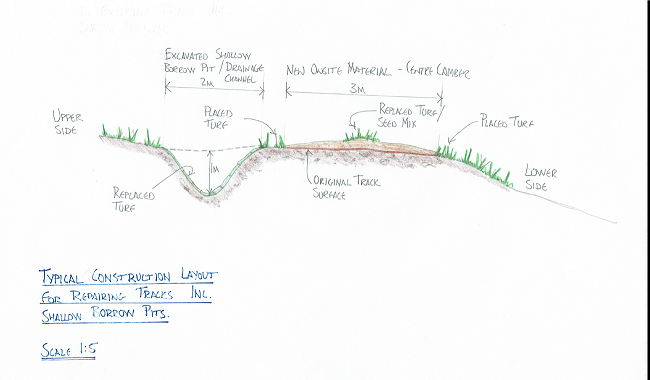
That is clearly false. It appears that the estate is proposing significant “upgrades” for most of these seven routes. That is supported by the evidence for the area where work has started:
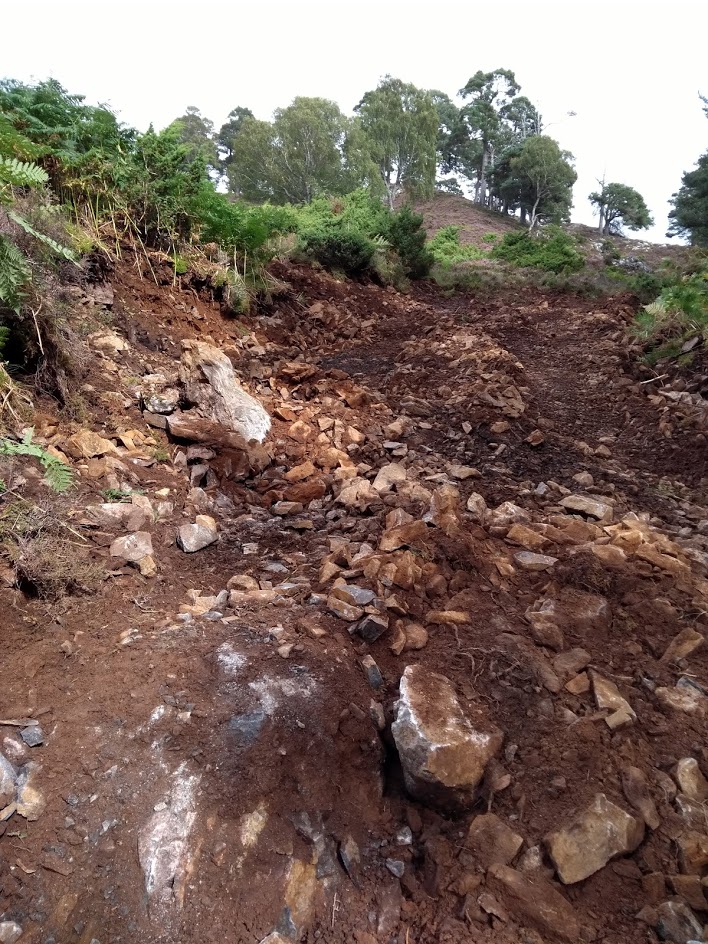
Indeed for many sections of the proposed works, to describe them as upgrades is very misleading:
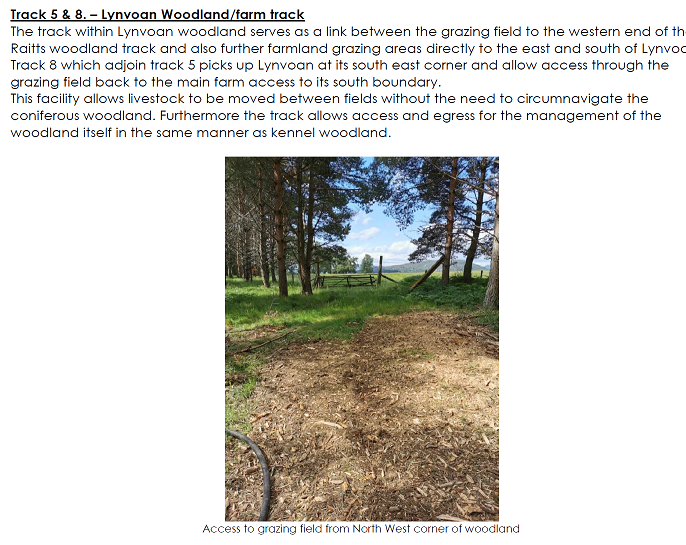
What Balavil appears to be proposing is a significant extension and upgrade to the the road network on the estate. One problem is that under the Prior Notification system as it is at present, whether a track exists or not is irrelevant. There is no distinction between track repairs, track upgrades and new tracks.
Its also not clear, under the Prior Notification system, about what agricultural or forestry use might mean. Within the application, the estate does refer to plans to create new areas of woodland but provides no evidence for this (eg woodland plans) or why new roads are needed for planting trees. Its not difficult to transport in seedlings on ATVs and trailers with minimum long-term impact.
Parkswatch has commented before on this, but all a landowner needs to do is say they have a few cattle or sheep somewhere and that appears enough to justify the creation of a new road for agricultural purposes. While if a landowner claims they want to plant or manage a few trees that appears enough to justify them creating a new road for forestry purposes. The consequence is, as at Balavil, that new roads can be created anywhere under the Prior Notification system.
That is fundamentally altering the character of the landscape in what is supposed to be a protected area, a National Park, where things should be done differently, .
So what’s wrong with these proposals at Balavil?
Without a detailed survey of all the 7.75 km of proposed works, its impossible to establish how much of the proposal involves:
- repairs – which might be needed
- upgrades – which might in some cases be justified (there appear to be some forest felling operations linked to Track 4 and this might need to be re-inforced for timber trucks to use it)
- lengths of new track
One can question, however, whether its appropriate to create new “forestry” tracks in what is arguably the finest area of native woodland on the west side of the A9 hereabouts.
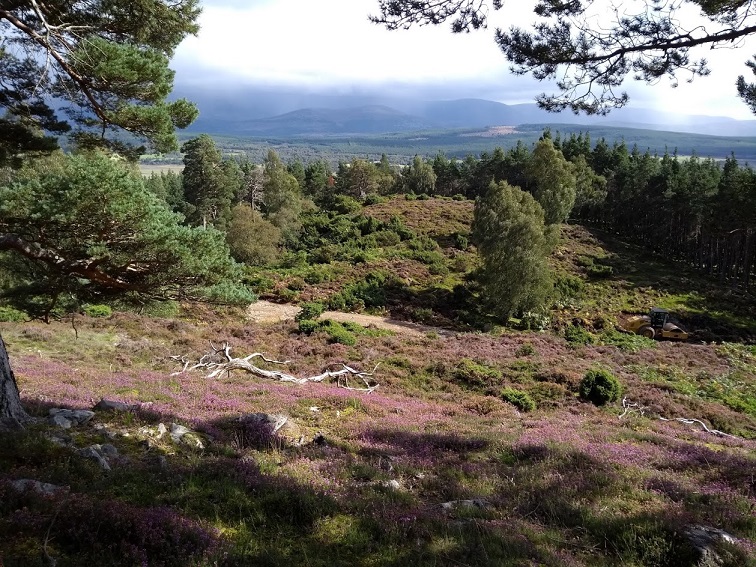
Planting is inappropriate here – the woodland should be allowed to regenerate/develop naturally – and the trees found here should not be “managed” whatever that means. So why is a new road required? If its to shoot deer, the estate should say that and apply for full planning permission which would allow a proper debate to take place about whether the construction of a new road here for deer management purposes is justified.
While its clear from the work that Balavil has undertaken to date that they are making attempts to restore the ground around the new tracks properly after construction (the horrific photo above shows the initial stage of new track construction) the evidence suggests there are also some fundamental design issues:
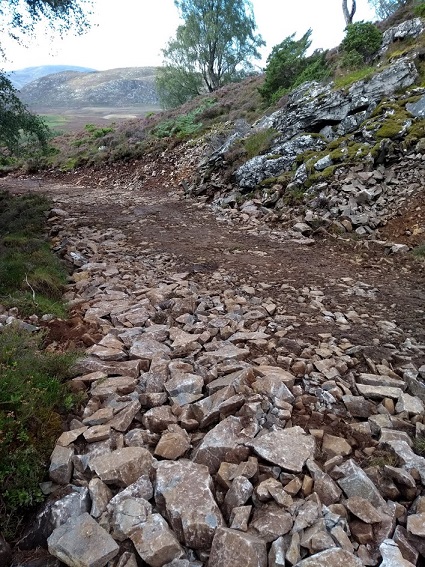
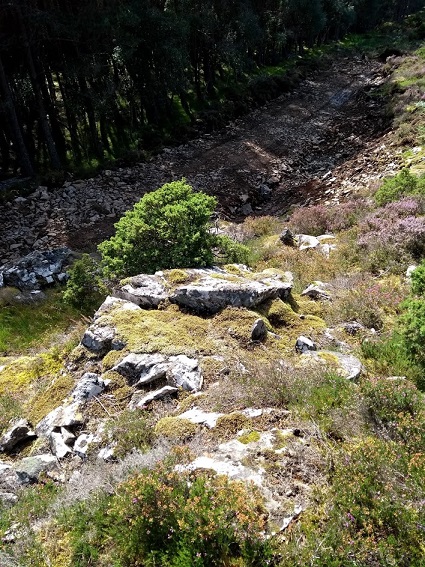
The photos (see also one at top) suggest that the final result looks as though is going to be quite a bit better than the average new “track” featured on parkswatch. Yet in places, the new road, appears to contravene best practice guidance and is likely to become a problem in future:
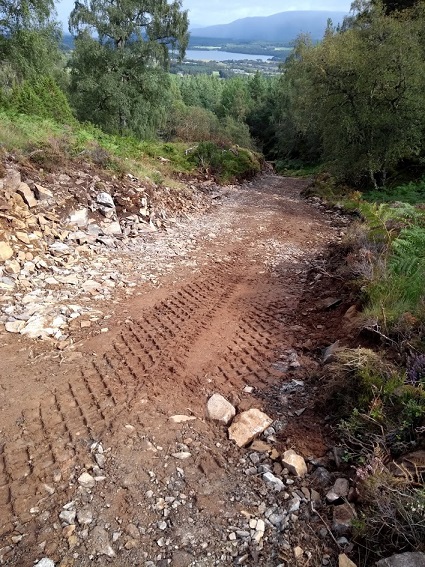
Even if a new road were justified hereabouts, which I doubt, parts of its design appear fundamentally flawed. Unsurfaced roads should never be allowed to follow a line like this.
What needs to happen
First and foremost the law needs to change. When the Tories voted with the Scottish Government to reject Andy Wightman’s proposed amendments to the Planning Bill, which would have brought all tracks in National Parks and other protected areas into the Planning System, the SNP Minister promised a further review of the Prior Notification System. That needs to start now – and Balavil provides evidence of why this is needed urgently.
Second, the Cairngorms National Park Authority needs to take far stronger action against tracks which are constructed without any form of planning approval. Until they do so, landowners will continue to break the law and the proliferation of roads across the National Park will continue unabated. In this case the CNPA needs to be prepared to take enforcement action against the section of road where work has started and challenge why this could possibly be said to be for forestry purposes. Even if evidence is provided that the work might be justifiable for forestry purposes, the CNPA should at the very least require full restoration of any section of the road which does not meet SNH standards for the design of hill tracks. If the estate won’t do that “voluntarily”, the CNPA should use its enforcement powers.
Third, the CNPA needs to call in the Prior Notification from Highland Council and subject the rationale for the other six tracks/roads to critical scrutiny. As part of this, for any section of these route where the CNPA decide work is justified, they should require an appropriate specification. There should be different specifications for different types of repairs and upgrade, not just the one size fits all specification which has been submitted with the Planning Application.
I would hope that Balavil will be up for this. They have, to give them credit, stopped the work and said they will co-operate with the CNPA. A welcome change to many landowners in the National Park where negotiations about unlawful tracks have been going on for years (a further post on this soon). They have also agreed to meet me and a fellow campaigner to discuss their plans to change how land on the estate is used and managed. That is very welcome.
I live in hope that something positive might come out of something that should have never happened.

I can scarcely think of any more special low level ridge in the Cairngorms than that of Balavil`s Creag Bhuidhe wood. I reckon that the pictures in the post are of Track4 and were taken where previously there was absolutely no track nor even vehicle usage.
I believe the making of track 6 would involve similar action and destroy the character of this very special place.
I suppose that it is the planning status designation that determines whether prior notification is sufficient requirement for “development, but it`s quite difficult for the interested, rather than the fully cognisant of planning process, to make sense of it.
The track over to the Dulnain rightly requires full permission but the arguably far more significant Creag Bhuidhe is devoid of protection. I can think of quite a few pieces of land around Kingussie whose character and ecology were totally destroyed. No designation, no protection and I suppose no sensitivity or even awareness of what was being done.
That wooded ridge of Creag Bhuidhe is prominent from many parts of Badenoch but since so few visit it, it is not surprising that what happens there elicits little local concern.